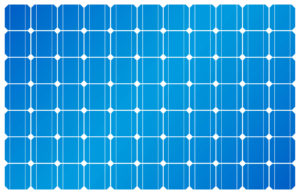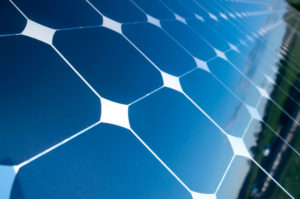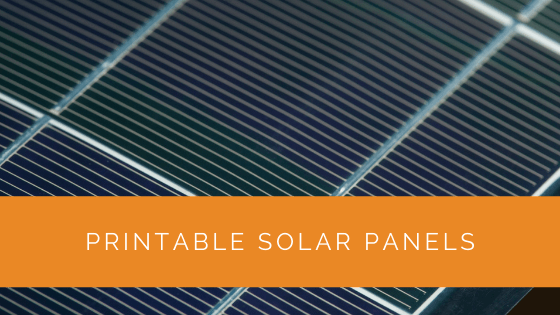In recent years, the world of renewable energy has witnessed a remarkable breakthrough with the development of printable solar panels. These innovative panels, also known as printed solar cells, have emerged as a cost-effective and highly efficient alternative to traditional silicon solar modules. This article explores the exciting world of printable solar cells, shedding light on their construction, benefits, and potential impact on the solar industry.
Contents
- 1 What Is Meant by Printed Solar Cells?
- 2 How Are Printable Solar Cells Made?
- 3 What Is Perovskite, and How Does It Help Save Costs?
- 4 What Is the Benefit of Using Printable Solar Cells?
- 5 What Is Solar Ink? What Are the Benefits of Solar Inks?
- 6 Can You 3D Print a Solar Panel?
- 7 Case Study: Deploying Printable Solar Panels in a Commercial Building
- 8 Expert Insights From Our Solar Panel Installers About Printable Solar Panels
- 9 Discover the Power of Solar with Solar Panels Network
- 10 Conclusion
What Is Meant by Printed Solar Cells?
In 2014, an Australian renewable energy agency, Melbourne and Monash University, and the University of Newcastle were bringing printed solar cells closer to the market. However, you may wonder, what exactly are these printed solar panels?
Professor Dastoor has stated that printed solar panels have many advantages and efficiencies over conventional solar cells. Silicon solar modules are inefficient and not low cost as they need constant repair on your roof.
Hence, printed solar cells are your best bet, according to Professor Dastoor. To put it simply, to produce solar electricity and solar energy, researchers have developed a very low-cost method to manufacture Inkjet solar cells at universities, which will change the solar industry.
A solar cell uses a light semiconductor material and electrodes on an organic solar cell substrate. These solar panels are one of a kind in the world.

How Are Printable Solar Cells Made?
Manufacturing flexible solar cells by finding cheap yet strong materials is imperative to constructing perovskite solar cells. You can use the printing press to achieve this quickly. Researchers in a university have found a way to modify the commercial printer to make flexible solar sheets. These are as thin as wine labels.
What Is Perovskite, and How Does It Help Save Costs?
You can reduce the production costs of solar panels by almost fifty per cent if you use optimised conditions and construction. This means that you should utilise a substance called Perovskite to make your solar cells.
This is a very cost-friendly material. It is way better than other substances like glass or indium. Perovskite has superconductive properties, and it has made significant waves in the research labs of MIT as well. This is exciting news to hear!
T3Dp is a company based out in Los Angeles, and it was able to use this material previously. Using the processes of 3D printing, they made a bunch of perovskite solar cells, which was a fantastic thing to accomplish at the time.
The panels are very sustainable and have ease of application. However, not all of it is fine and dandy. There is a catch to the entire situation as well. Perovskite is a very fragile substance. This means that it is very difficult to manufacture.
If it hardens, then there is no going back. That is the main issue being faced with this substance. However, multiple institutions are trying to solve this issue and make it more widespread for mass use.
What Is the Benefit of Using Printable Solar Cells?
The ability to print and produce low-cost solar panels is great news for all of us. Perovskite solar cells developed in a university have shown two major benefits of use.
Greater Flexibility
Since printed solar panels are very lightweight and flexible, you can easily use them daily. You can fit them into windows, in its furnishings, tents, and other various nooks and crannies.
Portability of the Cells
One of the best things about these panels is that they are portable. You can simply roll them and carry them away to any place in the world. They are thin and give immediate results in terms of power. They can be used in remote places, developing societies, and countries.
What Is Solar Ink? What Are the Benefits of Solar Inks?
Solar inks are made of different metal salts, which are dispersed in a polymer fullerene solution. Researchers have found that this can be used in layered coatings. Research groups used inkjet printer technology to print out a solar cell made of plastic materials and plastic substrates.
Overall, it is a complex process that helps create printed solar cells. Solar ink is very cost-effective. It makes solar power accessible to a lot more people. A silicon solar cell is generally made in vacuum chambers. There is no dust present, and this makes the process expensive and not efficient at all.
Researchers developed printable solar cells and modules that can last more than a decade and are inexpensive. This is achieved through commercial inkjet screen printing. Hence, you can manufacture a solar cell for very cheap using solar inks.
Dr. Scholes has stated, “Silicon is falling in price, but think about how cheap plastic is. The ink is negligible, so the raw materials are very cost-effective. This is a big step forward because you can put these cells anywhere you can think of. Also, the consistency is better than Silicon – they work well in cloudy conditions”.
Printed solar panels work just as well as regular ones and might be cheaper than your mobile phone plan.

Can You 3D Print a Solar Panel?
A Victorian organic solar cell or photovoltaics are generally made using semiconductors. UV light comes in contact with the electrons and loosens them within the layers. However, high costs and low energy ratings have severely affected the solar industry.
3D printing comes to the rescue here. You can print thin, flexible solar panels this way, and the price range won’t be uncontrollable. Therefore, it is also cost-effective.
Case Study: Deploying Printable Solar Panels in a Commercial Building
Background
At Solar Panels Network, we are committed to introducing innovative solar solutions that meet the diverse needs of our clients. This case study explores the deployment of printable solar panels in a commercial building, aiming to reduce energy costs and enhance sustainability.
Project Overview
The goal was to integrate printable solar panels into a commercial office building’s energy infrastructure. The building’s management was interested in a solution that would not only provide renewable energy but also be aesthetically pleasing and minimally invasive. Printable solar panels were chosen for their flexibility, lightweight nature, and the potential for cost savings.
Implementation
- Site Assessment and Customisation: Conducted a comprehensive assessment of the building’s exterior to identify optimal locations for the panels. We considered factors such as sun exposure, architectural features, and structural integrity to ensure maximum efficiency and integration with the building’s design.
- Panel Installation: Applied the printable solar panels to a variety of surfaces, including windows and the roof. This involved:
- Customising panel shapes and sizes to fit seamlessly with the building’s architecture.
- Ensuring proper alignment and attachment to maximise energy capture while maintaining the building’s aesthetic appeal.
- System Integration and Testing: Connected the panels to the building’s electrical system, incorporating energy storage solutions to optimise usage. This phase included thorough testing to ensure the system’s reliability and efficiency under different weather conditions.
Results
- Energy Efficiency: The printable solar panels provided a significant portion of the building’s electricity needs, demonstrating high efficiency even in less-than-ideal lighting conditions.
- Cost Savings: The building’s management reported a noticeable reduction in energy bills, with the cost of the solar panels expected to be recouped within a few years due to the savings on electricity.
- Aesthetic and Environmental Benefits: The integration of the panels was aesthetically pleasing, blending seamlessly with the building’s modern design. Additionally, the project contributed to a substantial reduction in the building’s carbon footprint.
Summary
The deployment of printable solar panels in this commercial building was a successful initiative, showcasing the versatility and efficiency of this new technology. The project not only provided economic benefits through energy savings but also supported the building’s sustainability goals. This case study highlights the potential of printable solar panels to revolutionise the way we approach solar energy, offering a flexible and cost-effective solution for a wide range of applications.
Expert Insights From Our Solar Panel Installers About Printable Solar Panels
Printable solar panels offer an exciting leap forward in renewable energy technology. Their lightweight and flexible nature makes them ideal for applications where traditional panels are impractical.
Senior Solar Technician
The versatility of printed solar cells means they can be integrated into a variety of surfaces, including windows and even portable devices, expanding the possibilities for solar power use.
Lead Installer
Using solar ink and perovskite materials, these panels are not only cost-effective but also efficient in various lighting conditions, including cloudy weather.
Renewable Energy Specialist
Discover the Power of Solar with Solar Panels Network
Are you navigating the world of solar installations? Look no further than Solar Panels Network, the UK’s trusted partner in harnessing the sun’s potential. Our dedication goes beyond just installations; we’re on a mission to transform how homeowners and businesses across the UK perceive and utilise energy. By choosing us, you’re reducing your carbon footprint and making a smart financial move that promises savings for years ahead. Contact us today and embark on your solar journey.
Conclusion
Printed solar panels are great for light energy and high efficiency. Silicon surfaces are no longer in vogue. Solar energy has been changed forever with the advent of these thin, flexible panels. Professor Paul Dastoor correctly stated that this is the most effective way to generate electricity for you.
Overall, solar energy is the future, and now you know everything about it!
About the Author
Solar Panels Network stands at the forefront of solar energy solutions, driven by a team of seasoned solar engineers and energy consultants. With over decades of experience in delivering high-quality solar installations and maintenance, we are committed to promoting sustainable energy through customer-centric, tailored solutions. Our articles reflect this commitment, crafted collaboratively by experts to provide accurate, up-to-date insights into solar technology, ensuring our readers are well-informed and empowered in their solar energy decisions.

